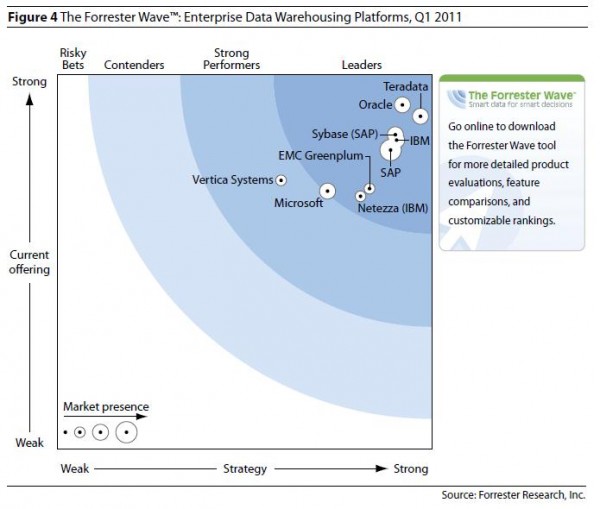I was demoing the Microsoft BI stack to a client the other day and although PerformancePoint, PowerPivot and Power View showed well as always, I was amazed that the Q&A session gravitated back to the same old questions that I always hear.
“Well what about Oracle?”
“Have the BI tools made it out of the department yet?”
“Is it really an enterprise platform?”
Really? You mean to tell me you don’t get your news from Channel 9 MSDN like the rest of us?! Uh… election? What election?
OK, so maybe I’m a little more in tune with this than some of you but that’s the reason we’re here, so let’s take a look at how this platform stacks up against these questions.
To start with, let’s go straight to Gartner’s Magic Quadrant for BI platforms. I assume most people have seen this but maybe not. The top BI vendors get graded on several facets and ranked accordingly. Over the last few years Microsoft has consistently been in the upper right quadrant and there’s no reason to believe they’ll come out.
Next, let’s look at Gartner’s rankings of the top ECM platforms. Once again, we see Microsoft right where we want them. But wait, we’re talking about BI platforms, not ECM right? Well yes, but the thing to remember is that Microsoft’s ECM platform is SharePoint, and this platform has also served as the BI delivery platform since the introduction of SharePoint 2010. So it is safe to assume that this whole is certainly greater than the sum of its parts.
“But what about data? Our clients have a lot of data you know and we’ve heard that SQL Server vaporizes if you run 5 queries then squint at it really hard.” …really? My suggestion here is to stop listening to those 80’s radio stations because someone is singing you an ooolld song.
So let’s look at data for a moment. Exactly how much data is in your DW? Certainly 100’s of GB’s is an easy place to start. Multi TB’s is becoming more common as well, but what about the Petabyte (PB)?
Is that even possible on SQL Server?
According to some fairly recent research from Forrester http://tinyurl.com/7yzkend the top are:
With Microsoft being ranked well as a Petabyte-scale platform, you certainly don’t need to worry about it in the Terabyte range as long as it has been sized properly.
So if Microsoft is ranked above or near its competitors in functionality and scalability, what else is driving its attractiveness? In my next blog post we’ll explore the concept of TCO to answer that question.



